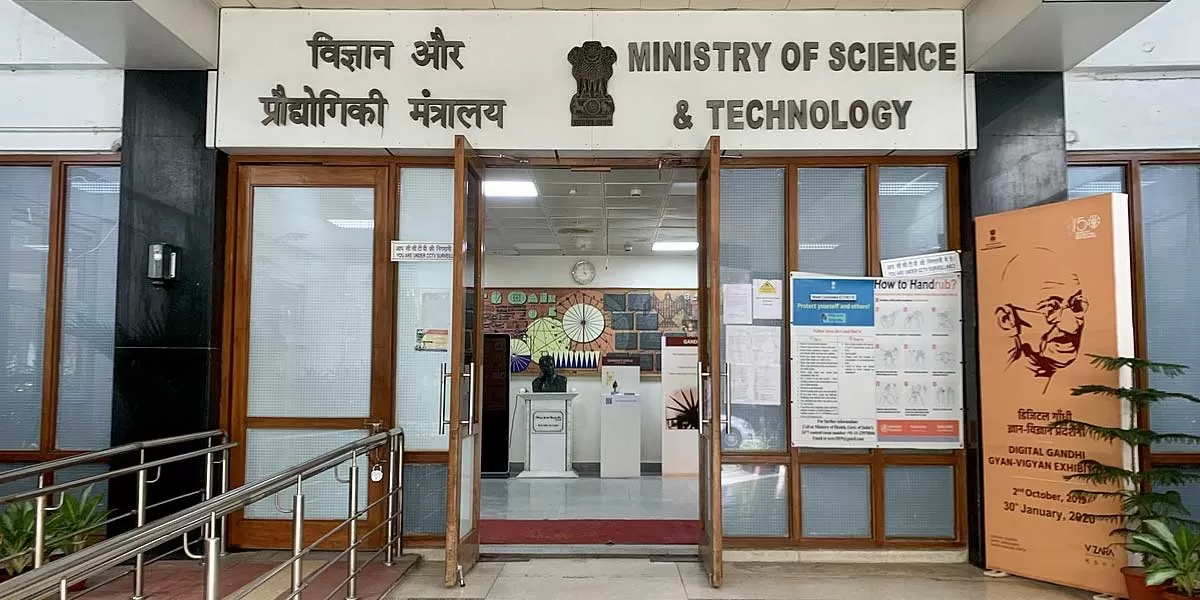On India’s historic 75th Independence Day, the Honourable Prime Minister Narendra Modi announced that the government will launch ‘PM Gati Shakti – National Master Plan for Multi-Modal Connectivity’, with a view to build holistic infrastructure in the country. Launched on 13th October 2021, GatiShakti is envisaged as a comprehensive and dynamic roadmap, to provide a bird’s eye view of infrastructure creation across the country, with the purpose of catapulting the ‘Gati’ or speed of such development.
Through the master plan, the government has created a digital platform on which its ministries are able to access information about the ongoing and upcoming projects to enable synchronisation of planning and implementation. States have also been on-boarded onto the platform. Hence, it has brought together, under one ambit, all the important infrastructure-related planning and implementation arms of the government, covering projects across railways, roads & highways, ports, energy, and others. Traditionally, a lack of coordination has been observed between various ministries/authorities, for instance on numerous occasions, an existing road is dug up for other infrastructure development like laying down underground gas pipelines or electric cables. This master plan aims to resolve such planning and implementation issues by breaking inter-department silos and promoting harmonization among them. It is noteworthy that this would not only provide momentum to the implementation of projects but also reduce the inconvenience caused to the common man in the country.
Gati Shakti seeks to be an enabler or a tool, leveraging the era of geo-satellite imagery and big data, to realize land and logistics plans in a time-bound manner. A platform, called BiSAG-N, has been developed by the Bhaskaracharya National Institute for Space Applications and Geoinformatics, under the Ministry of Electronics and Information Technology (MeitY). The platform boasts Geospatial Information Systems (GIS) mapping of the entire country, with 3D digital mapping till the plot level. Moreover, since the maps are interconnected, future infrastructure can also be outlined in a methodical and integrated manner.
India has been taking giant strides in improving its global competitiveness through a raft of reforms aimed at simplifying time-taking application/approval processes. The country has also put a focus on developing world-class infrastructure, comprising of a network of multi-modal transport systems, with an aim to boost exports and domestic manufacturing.
Given its ability to generate a multiplier effect in economic growth, robust infrastructure creation has been central to the government’s vision of making India an economic powerhouse of the world. In the last eight years, the government has undertaken a well-rounded approach to infrastructure development, driven by a slew of measures. To catalyse investment, it launched the National Infrastructure Pipeline (NIP), an ambitious target of spending US$ 1.4 trillion (2020-2025) for creating state-of-the-art infrastructure. Further, recognising the need to create channels for sustainable long term infrastructure funding, in 2015, the National Infrastructure and Investment Fund (NIIF), India’s first-ever sovereign wealth fund that today manages US$ 4.3 billion across infrastructure and private equity, was created. In another step, the government is setting up the National Bank for Financing Infrastructure and Development (NaBFID), a legislation backed development financial institution, to which the government has already committed more than US$ 25 million (Rs.20,000 core) in equity capital.
It is also noteworthy that various schemes of the government aimed at augmenting infrastructure and improving connectivity have already demonstrated impressive results. While Bharatmala has aided in trebling the pace of construction of national highways from an average of 12 km per day in 2014-15 to 37 km per day in 2020-21, UDAN (Ude Desh ka Aam Nagrik) has been instrumental in doubling the number of operational airports from 74 (2014) to 141 and adding 425 new air routes across the country. Focused on unlocking the potential of India’s coastline and waterways to reduce the cost of logistics and fuelling growth in EXIM cargo, Sagarmala has led to completion of 181 projects and 223 projects are under implementation, focusing on port modernization, connectivity, port led industrialization and the like. Indian Railways too has quintupled the average pace of commissioning new lines in 2021 versus 2009-14, and new projects such as Dedicated Freight Corridors and High-Speed Rails are expected to revolutionize logistics and passenger travel in the country. Hence, through Gati Shakti, the government has taken its push for infrastructure development to the next level, by creating an umbrella which will act as an impetus to successful and efficient implementation of infrastructure projects in India.
PM Gati Shakti Master Plan Is Based On Six Pillars:
Comprehensiveness: In the plan, all the existing and proposed infrastructure projects and economic zones would be mapped to a single digital platform. The master plan will employ modern technology and latest IT tools for coordinated planning. The BiSAG-N Gati Shakti platform comprises around 900 layers of data of central ministries and 654 layers of data of states, providing better visibility of infrastructure, such as railway lines, roads, and pipelines, to planning and execution departments.
Prioritization: Cross-department interactions would substitute the fragmented nature of decision making, and joint efforts will make it easier to prioritize developments. Approximately 94 new projects for movement of critical goods, including coal, food grains, and steel, through new railways lines have been mapped for speedy implementation under Gati Shakti.
Optimization: GatiShakti will assist in efficient planning of projects by identifying and mitigating important gaps beforehand. For example a successful industrial cluster/park would require an efficient multi-modal transport network with last mile connectivity. In this regard, Gati Shakti will also aid in successful designing of industrial corridors by the National Industrial Corridor Development Corporation (NICDC) as well as Multi-Modal Logistics Parks envisaged by the Ministry of Road Transport & Highways.
Synchronization: As a result of the synchronization of activities among departments using the portal, around 1,300 issues have already been solved for faster implementation of projects, exhibiting an impressive three-fold leap in the duration of issue resolution. Numerous issues related to land acquisition and clearances (including environment and forest), which typically delay large infrastructure projects, have been made easier to resolve.
Analytical: Amongst other reasons, the adoption of digital platforms and technology for accessing documents on an online repository has been a key driver in fast tracking large infrastructure projects in recent times. Through Gati Shakti, complete satellite imagery of infrastructure development in any part of the country is available conveniently which was missing earlier.
Dynamic: Enabled with satellite imagery, on-ground progress of various projects is updated regularly, allowing ministries and states to visualize, review, and monitor the progress of cross- sectoral projects.
The PM Gati Shakti National Master Plan for Multi-Modal Connectivity will help develop infrastructure in a planned manner, ensuring faster turnaround time and preventing cost overruns. This is critical for better utilization of limited long-term funding and could result in a higher number of projects being implemented with the earmarked fiscal budgets. In addition, better planning and speedy execution could improve the feasibility of such large-scale projects, making them more attractive to private investments.
The master plan is the result of the Prime Minister’s constant endeavour to build infrastructure that improves ease of living and ease of doing business in India. The transformative approach is expected to give rise to economic powerhouses that strengthen our local manufacturing ecosystem and boost exports, while also enabling ease of movement of passengers, through successful implementation of a future ready infrastructure for a new India.
By: Deepak Bagla, Managing Director & CEO, Invest India


















